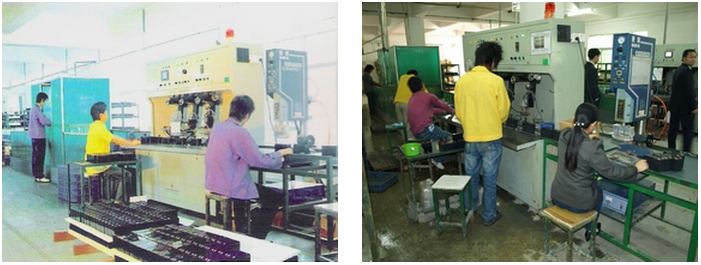 Unfortunately, many Chinese suppliers do not show the truth in their catalogs, websites, and other marketing materials.
Unfortunately, many Chinese suppliers do not show the truth in their catalogs, websites, and other marketing materials.
I found some really good illustrations on the Procur’Asia blog.
In Don’t select suppliers on a brochure or website, Etienne Charlier shows the difference between the photos shown in a brochure and what he saw in the factory.
“Supplier brochure pictures (on the left side) and our pictures (on the right side) are comparable but do not show the same reality:”
And in What you get is NOT what you see, Etienne shows that the brochures from two separate suppliers contained the same photos. Obviously they can’t each own a factory that looks exactly the same.
“The product pictures in the brochure are copied from other manufacturers. When you compare many suppliers, it becomes obvious, like in these real examples:”
Anybody got similar stories or photos?
————-
Similar case: How to detect a trader from a manufacturer in China?





In selecting factories for one particular family of truck parts, I made the mistake of analyzing the different factories’ catalogs to determine who had the broadest selection. In doing my initial factory audit, I had picked one part number at random and asked to see the stamping dies. The factory manager was quite puzzled; he didn’t recognize the part number. After trying a few more it became obvious that the catalog was a work of fiction. Saving the day, the salesman said that these were all parts that they *could* make!
Similarly, the product display you will often see in the sales office cannot be trusted. Often, I see samples which came from other factories and have never been produced. Or, perhaps they are tooled at a different factory owned by a brother in law.Needless to say I now ignore the catalogs. I make my own parts listing in the factory, in the tool room, with a knowledgeable worker. (Even here, they could certainly fool me if they were determined!) A related issue: Be cautious in drawing conclusions about a supplier’s tooling and capability based on a small selection of part numbers or models. Even when the supplier actually is capable of making the lower volume items, I often find the tooling and processing to be quite different (and usually far inferior) to the high volume parts. If you need both, check them all.
Thanks a lot for the sharing your experience. Lessons that are quite relevant for all importers!
This murky business is quite often continued on some of the trade platforms. Pictures of facilities and products of quite a few companies have not much to do with reality, when the platforms get involved it’s getting close to organized fraud
Yes, the pages on the B2B directories are part of the supplier’s marketing materials. And yes, sometimes these directories make things unclear on purpose.
Glad you like the photos. What you see is NOT what you get !
Yes, I have a story that will make
you reconsider placing an order from a factory you have not
visited.
One of our EYO Alliance Members (http://www.eyo-alliance.com/)
was working with a factory in China to manufacture LED light
bulbs. The member had already negotiated the contract price,
approved a sample and modified it to make a mold. They received
the final sample and were very pleased. However, our Member
asked the EYO Alliance Team to preform a full audit of the
factory including a tour of the factory’s production line before
they went though with the purchase.
EYO scheduled the audit with the factory and upon arriving to our
destination I was surprised to had they brought me to a large
building with a dormitory, but not the factory. As I had scheduled
the audit of the factory, I asked them take me to see the actual
factory before our meeting. They had many excuses as to why we
should not go to the factory but I insisted.
Upon arrival at the factory, which looked nothing like the
website, the biggest surprise was they don’t make LED light bulbs
there at all.
After a bit of an inquiry, the factory management admitted that we
had arrived at the mother factory and the location where our
member’s LED Light bulbs was another 15 minute drive away.
I insisted we go there. This is now the third trip to see the
factory.
On arriving it became clear that the smaller “factory” was not a
factory at all, but rather it was a dirty space on the 3rd floor
of a very old, run-down building.
I had used my time in the car driving from one location to another
to complete some of my audit. The “factory” representative told
me they have 100 employees working in this factory where our
member’s LED light bulbs will be made. In reality, on the 3rd
floor there were 4 lines of production, of which only one actually
worked. Two of the other lines had no electricity. The last one
was full of dust and was converted into storage.
The functioning production line, instead of being manned by 100
employees, was staffed by only 7 or 8 that day.
They have clearly lied about everything from the factory
condition, number of employees, procedures etc.
Of all the excuses however, this one is the best: the management
told me the other 90+ employees are off today and because they
worked so much the week before. So when I asked why there are only
15 chairs to run this line they old me “When the personnel come,
they come with their own CHAIR.”
For some suppliers, the reality is that they are much better at
lying than they are at making a quality product.
Yes, some suppliers are better avoided, and a factory audit can uncover many surprises. Thanks for the interesting story, Gaetan.
most of our time and energy goes waste when we find out the either the pictures are from other company or they do not make the products as in their cataloge and most irritating part before visting them, checking on tel and email they confirm everything, later just laugh or say sorry
Your findings are very informative, that’s what I need at this point in
time to aid me in my first and subsequent business dealings in China.
Just don’t trust anything, don’t assume anything, and verify everything you can. It’s that simple 😉